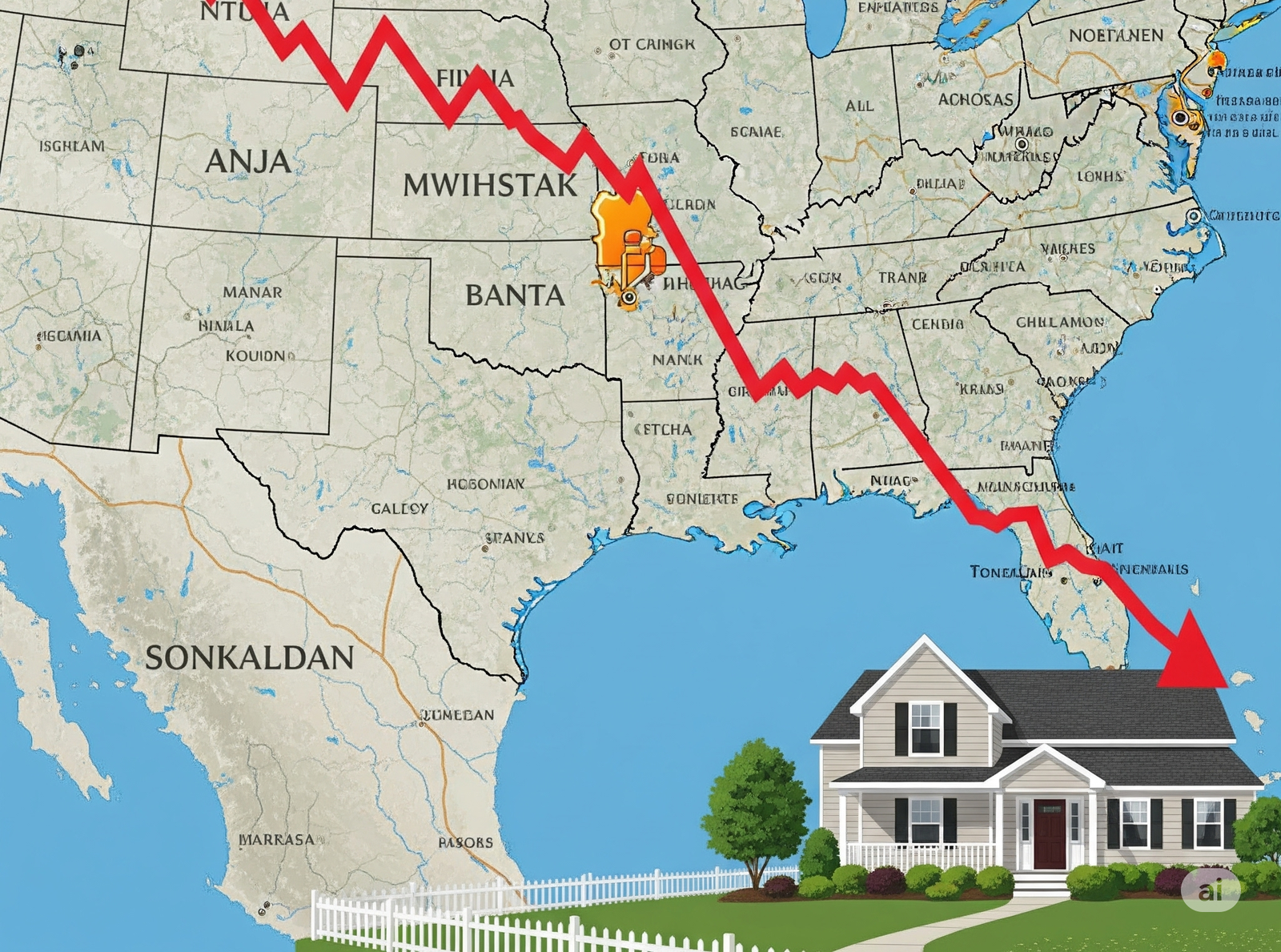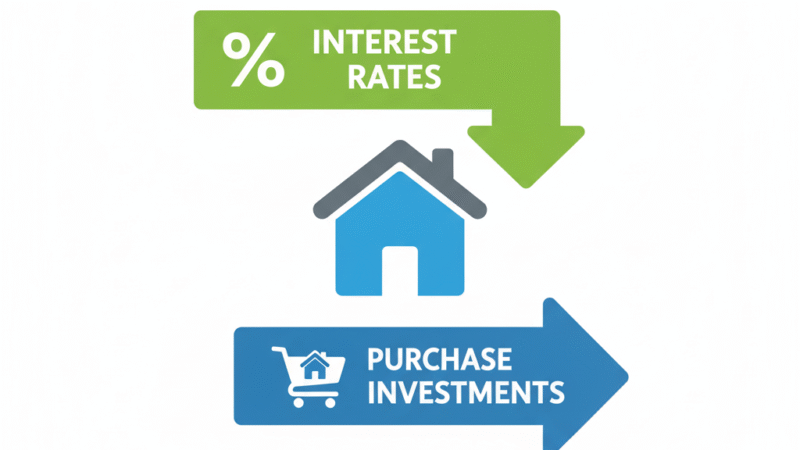Why Adjustable Mortgage Rates Can Save You More in Small Towns

Imagine living in a quiet small town, sitting on your porch, sipping coffee, watching the sunrise over fields or a cozy neighborhood. That’s what my friend Anna dreamed of when she left the hustle of São Paulo for a calmer life. She didn’t have a big paycheck—just a job at a local diner—but she wanted a home of her own. When she heard about adjustable mortgage rates, it changed everything. Suddenly, her dream felt within reach. If you’re wondering how to afford a house in a small town without breaking the bank, stick with me. I’ll explain how these rates can save you money in rural areas, like we’re chatting over a burger, keeping it simple and real.
What Are Adjustable Mortgage Rates?
Adjustable mortgage rates are a type of home loan where the interest—the extra money you pay to borrow—can change over time. Unlike a regular loan where the interest stays the same forever, this one starts lower and might go up or down later, depending on how things are going in the world. It’s like a phone plan that starts cheap and adjusts later, you know?
When Anna heard about this, she was curious. “What do you mean, the interest changes?” I told her it starts with lower monthly payments, which is great when you’re settling into a new home. After a few years, the bank looks at the economy and decides if the interest goes up or down. It might sound risky, but in small towns where houses cost less, this kind of small town home loan can be a real game-changer.
Why This Works So Well in Small Towns
Small towns have a special vibe, don’t they? Houses are cheaper, life is simpler, and your money goes further. Adjustable mortgage rates shine here for a few reasons. Let’s break it down.
Cheaper Homes, Less Worry
In small towns, a nice house might cost between $80,000 and $150,000. In big cities, that jumps to $300,000 or more. Since you’re borrowing less, even if the interest rate goes up later, it won’t hit you as hard. Anna bought her house for $100,000. When her rate adjusted, her payment only went up by about $50 a month. That’s manageable, right?
Lower Payments at the Start
With adjustable rates, the first few years have low interest. That means smaller monthly payments when you’re getting used to your new place. For someone on a tight budget, like a teacher or store clerk, this is huge. Anna paid $420 a month at first, while a regular loan would’ve been $530. That extra $110 helped her buy new curtains!
Steady Small Towns
In rural areas, home prices don’t bounce around like they do in big cities. That gives you extra peace of mind. If you need to sell your house later, you’re less likely to lose money. Anna knew her town’s market was stable, so she felt safe with this loan.
How These Loans Work
Let’s pretend you’re my neighbor asking how this works. Here’s the deal:
The Cheap Start
For the first few years—maybe 3, 5, or 7—the interest is low. Anna got a 5-year loan at 3%, while a regular loan was 5%. On her $100,000 loan, that meant $420 a month instead of $530. Look at those savings!
The Changing Part
After those first years, the interest can change—up or down—based on the economy. But don’t worry, there’s usually a limit so it doesn’t get crazy. Anna’s loan could only go up 2% at a time, so she knew her payment wouldn’t jump too much.
Different Types
You’ll see terms like “5/1” or “7/1” ARM. The first number is how many years the rate stays low. The second is how often it can change after that (usually every year). Anna picked a 5/1 because she wanted 5 years of low payments to get settled.
When These Loans Are a Good Idea
Not everyone should choose an adjustable-rate loan, but for some folks in small towns, it’s a smart move. Here’s when it fits:
If You Won’t Stay Forever
If you think you’ll move in 5-7 years, you can enjoy the low starting rate without worrying about changes later. Anna planned to stay about 5 years, so a 5/1 ARM was perfect.
If You Expect More Money Later
If you’re hoping for a better job or a raise soon, the low early payments give you room to breathe now. Anna’s brother, a mechanic, used an ARM because he knew his shop was growing.
If You Want Extra Cash Now
Lower payments at the start mean more money for things like fixing up your house or saving for a rainy day.
Comparing Adjustable to Regular Loans
To help you decide, let’s put adjustable and regular (fixed-rate) loans side by side:
Regular (Fixed-Rate) Loans
- Good: Your payment stays the same forever, no surprises.
- Not So Good: Higher interest means bigger payments from the start. For Anna, it would’ve been $530 a month.
Adjustable-Rate Loans
- Good: Starts cheaper, perfect for finding the best rates rural area. Saves you money early on.
- Not So Good: Payments could go up later, so you need a plan.
Anna chose an adjustable loan because the $110 savings each month let her afford extras for her daughter’s room.
Tips to Make It Work
If you’re thinking about a save with ARM loans option, here’s how to do it right:
Pick a Longer Low-Rate Period
A 7/1 or 10/1 ARM gives you more years at the low rate. Anna went with a 5/1 but later wished she’d picked a 7/1 for more calm.
Know the Limits
Ask the bank how much the rate can go up. Anna’s loan had a 2% cap per change, so she knew her worst-case scenario.
Save the Extra
If your ARM saves you $100 a month, put that in a savings account. If the rate goes up later, you’ve got cash ready. Anna saved $50 a month and built a little safety net.
Finding the Best Adjustable Mortgage Rates
To get the best rates rural area offers, you need to look around. Here’s how:
Talk to Local Banks
Small-town banks and credit unions often know rural loans best. Walk in and say, “I’m looking for a small town home loan with adjustable rates.” They’ll sort you out.
Check Online Lenders
Some online banks have great deals on flexible mortgage options. Search “adjustable mortgage rates 2025” to compare.
Get a Loan Helper
A mortgage broker can find the best ARM deals for you. They know which banks love small-town buyers. Anna’s broker saved her time and got her a 3.2% starting rate.
Risks and How to Stay Safe
I’m not gonna sugarcoat it—there are risks. But you can handle them:
Rates Might Go Up
If the economy shifts, your payment could increase. Anna’s went from $420 to $475. She planned for it and was fine.
Not Great for Forever Homes
If you want to stay in your house for life, a fixed-rate loan might be safer. But in small towns, where prices are stable, ARMs are less risky.
How to Protect Yourself
- Choose an ARM with clear limits on rate increases.
- Save extra during the low-rate years.
- Ask your bank if you can switch to a fixed rate later if needed.
Why Small Towns Love These Loans
Small towns are perfect for save with ARM loans because houses are affordable, so you borrow less. Plus, rural markets don’t swing wildly like cities, so your home’s value stays steady. In 2025, with interest rates expected to be reasonable, ARMs could save you hundreds a year. Anna’s saving $1,300 annually, which covers her daughter’s sports fees and home fixes.
Anna’s Story: A Happy Ending
Anna was nervous about buying her $100,000 home in a small Ohio town. She earned $32,000 a year and didn’t want to feel strapped. A fixed-rate loan would’ve cost $530 a month, but her 5/1 ARM started at $420. That $110 savings let her buy furniture and a sandbox for her daughter. She knows the rate might go up in 5 years, but she’s saving now and feels confident. If she did it, so can you.
More Tips for Small Town Buyers
Beyond ARMs, here are ways to make your home loan work in a rural area:
Check Government Loans
In Brazil, programs like Minha Casa Minha Vida help in small towns, often with low or no down payments.
Look for State Help
Some states offer grants or low-rate loans for rural buyers. Search “[your state] homebuyer help” to find them.
Save a Little
Even with low payments, set aside $20 a week. If rates go up, you’re ready.
What If You’re Scared?
I get it—loans can feel overwhelming, especially when money’s tight. Let’s tackle those worries:
“What If Rates Skyrocket?”
Most ARMs have caps, so it won’t get out of control. Ask your bank to show you the worst case.
“What If I Can’t Pay Later?”
Pick a house with payments you can handle now. If things get tough, banks often work with you.
“Is This Too Risky?”
In small towns, where prices are steady, it’s safer. You can also refinance to a fixed rate later if you want.
Anna was scared too, but she talked to her bank, understood the limits, and took the leap.
Conclusion: Your Small Town Home Awaits
Adjustable mortgage rates could be your secret to owning a home in a small town without stretching your budget. They start low, saving you money when you need it most, and in rural areas, the risks are smaller. Picture yourself in a cozy home with cash left for the things you love. Start by talking to a bank, checking government programs, or saving a bit each week. You’re closer to that porch and sunrise than you think, and I’m rooting for you!
Key Points to Know
- Adjustable mortgage rates start low, helping you save early on.
- Small town homes cost less, making ARMs less risky.
- Great if you’ll stay 5-7 years or expect more income later.
- Look for loans with caps on rate increases for safety.
- Check local banks or online for the best rates rural area.
- Save extra during low-rate years for peace of mind.

